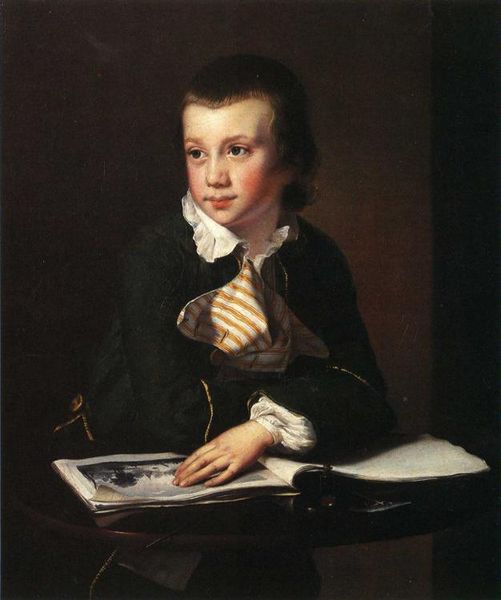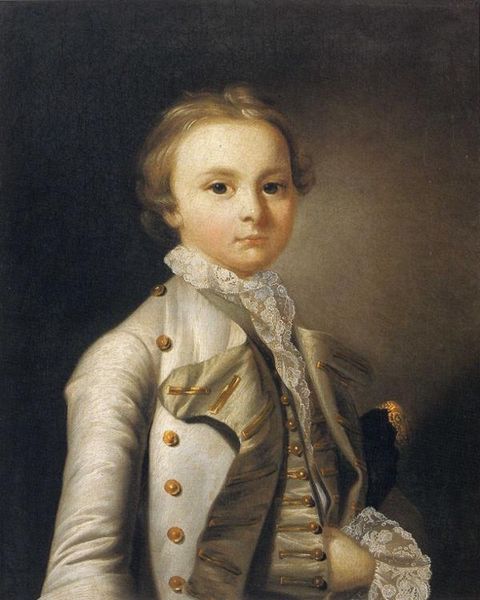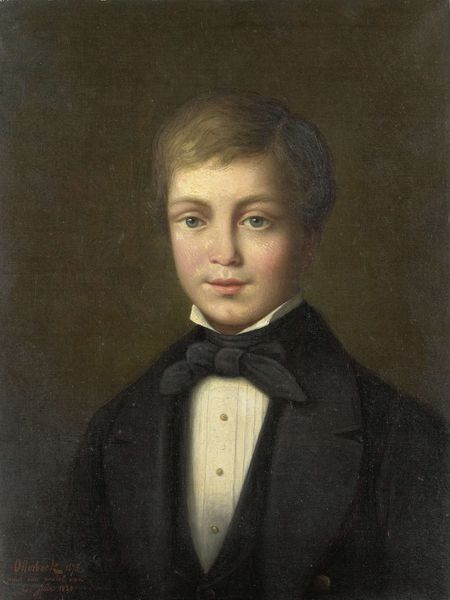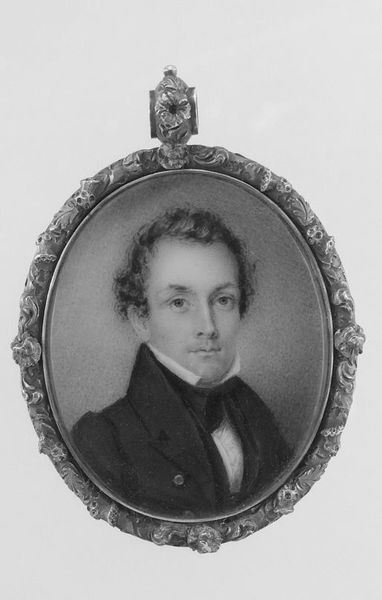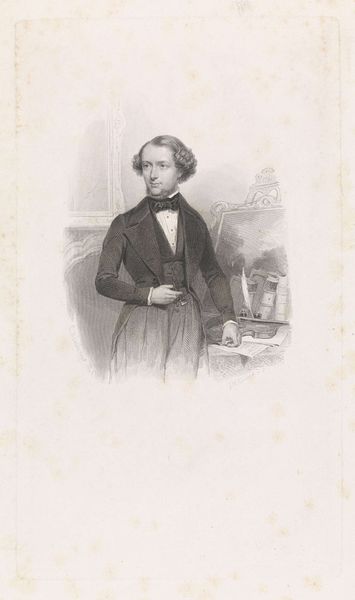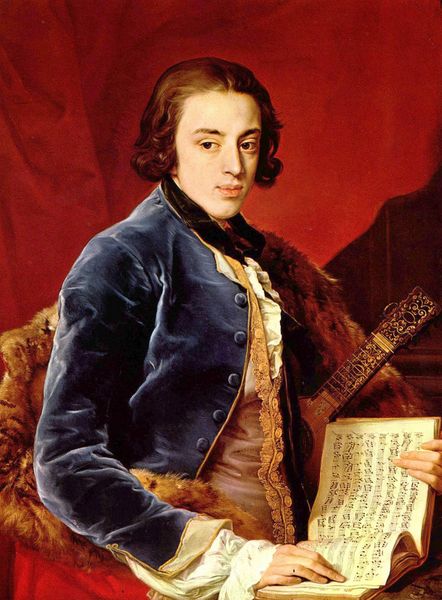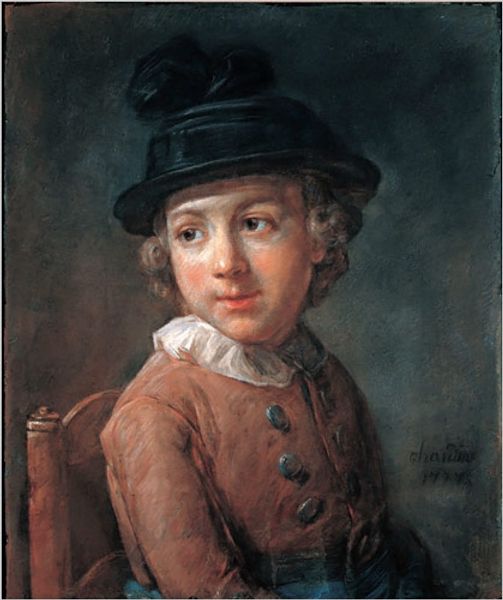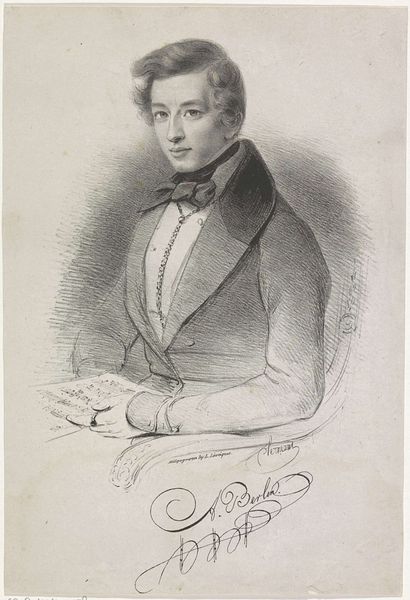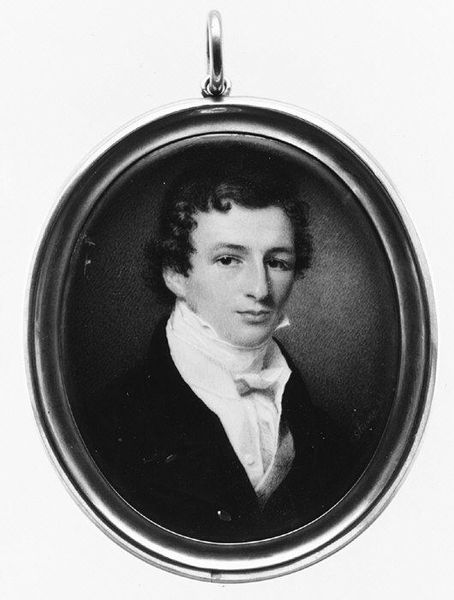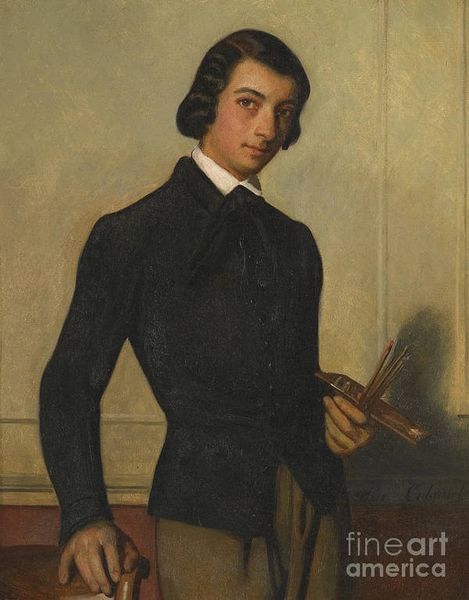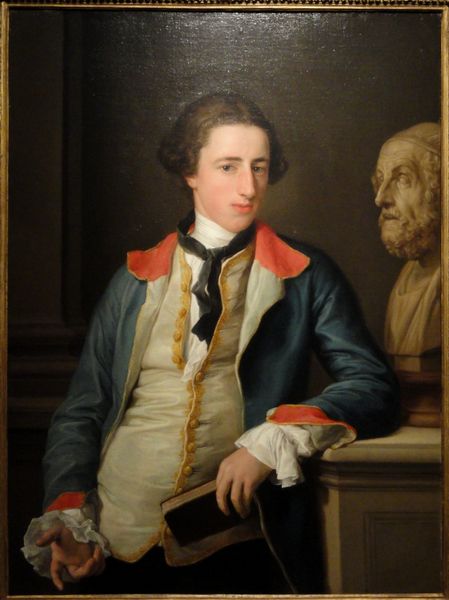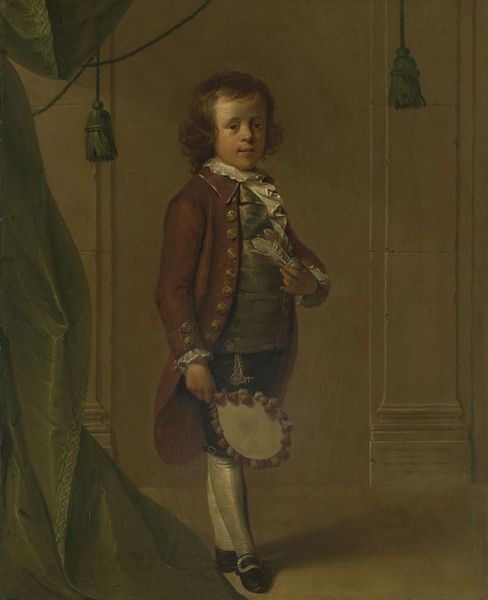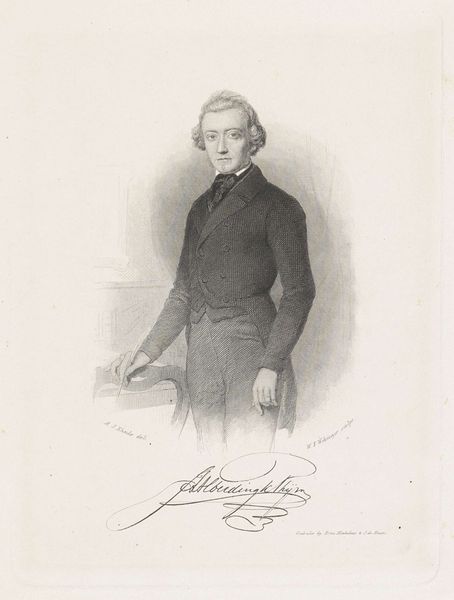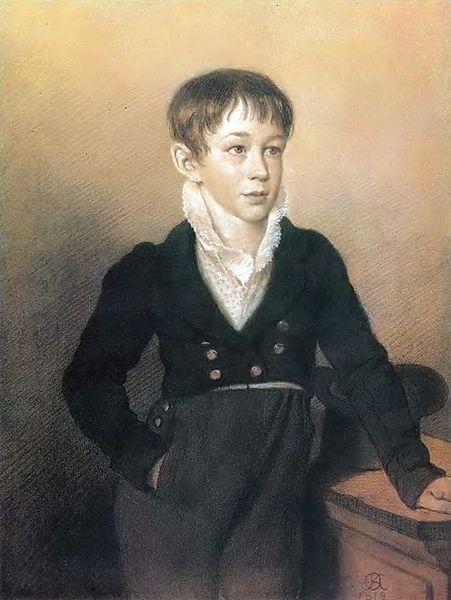
painting, oil-paint
#
portrait
#
narrative-art
#
painting
#
oil-paint
#
romanticism
#
genre-painting
Dimensions: 106 x 78.5 cm
Copyright: Public domain
Curator: Christina Robertson painted this "Portrait of Prince Nikolai Borisovich Yusupov" in 1840, an oil-on-canvas piece currently housed in the Hermitage. Editor: My first impression is the somber elegance. There's a strong sense of stillness, despite the vibrant color and playful curls of the young man in the painting. Curator: It’s a fascinating commission because Yusupov was from one of Russia’s wealthiest and most influential families. Portraits like these cemented social status and offered glimpses into the private lives of the aristocracy. Here we have this aristocratic youth, presumably poised to take over the family leadership, but he is shown as thoughtful and somewhat melancholic, reflecting romantic sentiments of the time. Editor: Melancholy is indeed a key ingredient. Look at the chromatic scale, the browns and dark greens provide a certain grounded somber background; at the same time, the contrast between this tonal gravity and the pale skin tones and frilly shirt gives it a strong pictorial thrust that propels the prince into the picture plane. I am interested in that violin… Curator: A typical attribute of the leisured, artistocratic male. While aristocratic lineage afforded him a certain pre-ordained authority, excelling in arts such as violin playing provided means for performative identity display and for solidifying ones position in social networks. Editor: Observe how his small hand delicately grasps the bow. This is a perfect demonstration of painting as a kind of performance. Every minute detail speaks volumes, for example, notice the details on his jacket… Curator: The detail is striking. This painting is more than just a pretty picture, it functions as an index of aristocratic norms and tastes, the artist playing a key role in perpetuating this cultural value system. Editor: It's true that there's a constructed reality at play here, it is an orchestrated effect—down to the lighting that casts shadows, a formal approach which can teach us a great deal. It invites us to think of this representation in painting in its very particular qualities. Curator: It’s amazing to consider how much information paintings of the 19th century convey, the subtle and the overt. Editor: Agreed. It reminds us to look closer at how objects are not only created, but positioned in society, influencing us from generation to generation.
Comments
No comments
Be the first to comment and join the conversation on the ultimate creative platform.
